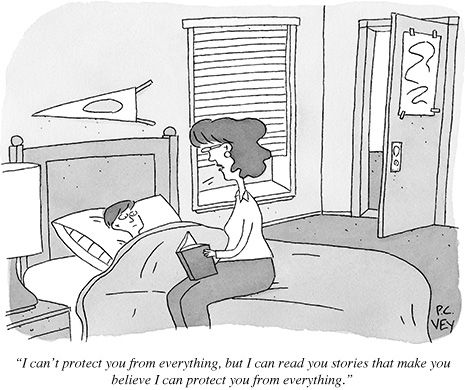बा सी मर्ढेकर:
"...
घेउं दे आघात तीतें
इंद्रिय-द्वारां जगाचे;
पोळुं दे आंतून तीतें
गा अतींद्रियार्थं आंचें.
..."
(#१, 'आणखी कांही कविता', १९५९/१९७७)
कै. जी ए कुलकर्णींचा पत्र व्यवहार वाचल्यावर एक गोष्ट प्रामुख्याने लक्षात रहाते ती म्हणजे त्यांनी अनुभवलेले अतिशय जवळच्या लोकांचे अनेक अकाली मृत्यू. जी एंच 'भाग्य' म्हणजे त्यांना त्यांच्या पत्नी वा मुलांचा मृत्यू पाहावा लागला नाही कारण ते जन्मभर अविवाहित राहिले. पण ज्या साहित्यिकांनी संसार केले त्यांचे काय? खालील पोस्ट मध्ये तीन उदाहरण आहेत: दोन देशी, एक विदेशी.
२०१७साली '
चिं.वि.: साहित्यातले अन् आठवणीतले' हे २०१३ साली प्रकाशित झालेले पुस्तक वाचायला सुरवात केली.
चिं.विंचे (C V Joshi) स्वतःचे लेख सोडून इतर बरेच लेख ('चिं.वि.: साहित्यातले') सामान्य दर्जाचे आहेत, जयंत नारळीकरांची (Jayant Narlikar) प्रस्तावना बरी आहे पण चिं.विंच्या नातेवाईकांनी लिहलेले लेख ('चिं.वि.: आठवणीतले') आयुष्याबद्दल खूप काही सांगून जातात आणि म्हणून ते लेख व दोन कृष्णधवल फोटो मला आवडले.
सर्वात महत्वाची गोष्ट म्हणजे - चिं. विं (१८९२-१९६३) आणि त्यांच्या पत्नींच्या (सरस्वती) (१९००- १९६६) जीवनावर पडलेली अपत्य मृत्यूंची गडद छाया. पुस्तक वाचून असे कळते कि त्यांना (बहुदा) एकूण तीन मुली आणि चार मुलगे झाले. त्यातील एक मुलगी आणि चारी मुलगे वारले. ही सगळी मुलं जन्मताच मृत्यू न पडता थोडी थोडी मोठी होऊन गेली. एक मुलगा- परशुराम- तर मॅट्रिक होऊन वयाच्या (बहुदा) पंधराव्या वर्षी, मे ४ १९४० रोजी, टायफॉइडने वारला. सगळ्यांनी आठवणींचे मोठे संचीत आईवडिलांसाठी तयार केले.
त्याकाळी मध्यमवर्गीय घरांतून मृत्यूचे थैमान होते हे खरे पण त्यांचे आर्थिंक आणि सामाजिक स्थान पाहता चिं विंचे कुटुंब खूप यात इतरांपेक्षा कितीतरी जास्त होरपळून निघाले.
मी या ब्लॉग वर आर के नारायण (
R K Narayan) १९०६-२००१ आणि चिं. विंची तुलना
सप्टेंबर १६ २००९रोजी केली होती.
काय योगायोग (जो मला त्यावेळी माहित नव्हता) पहा- आर के नारायण यांचे आयुष्य सुद्धा त्यांच्या पत्नीच्या (खालच्या उजवीकडच्या फोटोत डावीकडच्या) टायफॉइडने झालेल्या अकाली मृत्यूने (१९३९) होरपळून निघाले होते. नारायण त्यांच्या, जवळ जवळ संपूर्ण आत्मचरित्रात्मक, 'दी इंग्लिश टीचर', १९४५ मध्ये त्या मृत्यबद्दल म्हणतात:
“There are no more surprises and shocks in
life, so that I watch the flame without agitation. For me the greatest reality
is this and nothing else…Nothing else will worry or interest me in life
hereafter.”
courtesy: current copyrightholders to the images
चिं. विंच्या लेखनात मृत्यू १९४०नंतर अनेक वेळा आले पण ते कधी नारायण यांच्या सारखे त्या बद्दल लिहताना दिसत नाहीत. पण त्यांची वास्तवातील स्थिती फार वेगळी नव्हती याची पुस्तकातील आठवणी वाचून खात्री पटते.
पण विशेष म्हणजे या दोन्ही महान लेखकांची प्रतिभा वा बहुप्रसवता या टायफॉइडच्या उद्ध्वस्त करून टाकणाऱ्या धक्क्याने आटल्याचे दिसत नाही. नारायण यांची सर्वोत्तम पुस्तके त्यानंतर आली. चिं. विंच्या लेखनाचा दर्जा सुद्धा किंचितही कमी झाल्याच जाणवत नाही. दोघांच्या लेखनावर आधारित लोकप्रिय चित्रपट निघाले, लोकप्रिय टीव्ही सीरिअल निघाल्या, दोघांची जवळ जवळ सर्व पुस्तके आज २०१७साली बाजारात मिळतात.
परशुराम चिं जोशीने वडिलांना शय्येवरून दोनदा सांगितले होते की त्याने गोविंद आपटेकडून (मित्र?) हॉकी स्टिक विकत घेण्यासाठी सहा आणे उधार घेतले आहेत आणि त्याचे ते पैसे परत द्यावेत. नोव्हेंबर २४ १९५८ रोजी चिं.विंनी ते पैसे परत केले. त्यासाठी त्यांनी जे (उत्कृष्ट हस्ताक्षरात) पत्र लिहले ते हे :
सौजन्य : चिं.विं जोशींचे कुटुंबीय
त्या पत्रातील एक ओळ पहा: "या पत्राचें उत्तर पाठवू नको."
चिं.विंना त्या विषयाला पूर्णविराम द्यायचाय. परशुरामला दिलेला शब्द ठेवायचाय. परशुराम तर आयुष्यातून जाणारच नाहीये पण गोविंद आपटेंनी पैसे घेऊन टाकले तर किमान परशुरामची ती 'मेंदू बदडणारी' हॉकी स्टीक तरी जायची आशा आहे.
त्यांच्या पत्नी अपत्य शोकाबद्दल काय म्हणायच्या ते पहा: "... अग, दिवस इतरांचा असतो त्यांच्या समोर काय आपण आपले दुःख सांगत बसायचे, रात्र तर माझी असते, तेव्हा रोज रात्री मी माझ्या मुलांची आठवण काढते..."
डब्ल्यू.
डब्ल्यू.
जेकब्स,
जेरोम के जेरोम,
हर्बर्ट जेकिन्स,
स्टीफन लीकॉक
यांच्या विनोदी लेखनाचे संस्कार
चिं.विंवर झाले. त्यात सर्वात महत्वाचे नाव म्हणजे : मार्क ट्वेन (१८३५-१९१०) कारण ट्वेनयांचा प्रभाव श्रीपाद कृष्ण कोल्हटकरांवरांकडून सुद्धा चिं.विं पर्यंत पोचला असणार.
ट्वेनयांच्या जीवनातील शोक पहा... ते लिहतात:
“…I lost Susy thirteen years ago; I lost her mother—her
incomparable mother!—five and a half years ago; Clara has gone away to live in
Europe; and now I have lost Jean. How poor I am, who was once so rich! Seven
months ago Mr. Roger died—one of the best friends I ever had, and the nearest
perfect, as man and gentleman, I have yet met among my race; within the last
six weeks Gilder has passed away, and Laffan—old, old friends of mine. Jean
lies yonder, I sit here; we are strangers under our own roof; we kissed hands
good-by at this door last night—and it was forever, we never suspecting it. She
lies there, and I sit here—writing, busying myself, to keep my heart from
breaking. How dazzlingly the sunshine is flooding the hills around! It is like
a mockery.
Seventy-four years ago twenty-four days ago. Seventy-four
years old yesterday. Who can estimate my age today?
I have looked upon her again. I wonder I can bear it. She
looks just as her mother looked when she lay dead in that Florentine villa so
long ago. The sweet placidity of death! it is more beautiful than sleep….” ("Jean is dead!', 1909)
Susy, Clara, Jean- ट्वेनयांच्या मुली.
सुझी (१८७२-१८९६)- स्पायनल मेनन्जायटिसने वारल्या - चिं. विंच्या सगळ्यात धाकट्या मुलीला - विद्युल्लता - हाच रोग झाला होता. ती वाचली पण मेंदूवर आयुष्यभर परिणाम झाला.
जीन (१८८०-१९०९)- फेफरे (seizure) येऊन घरातील बाथटब मध्ये बुडून वारल्या.













